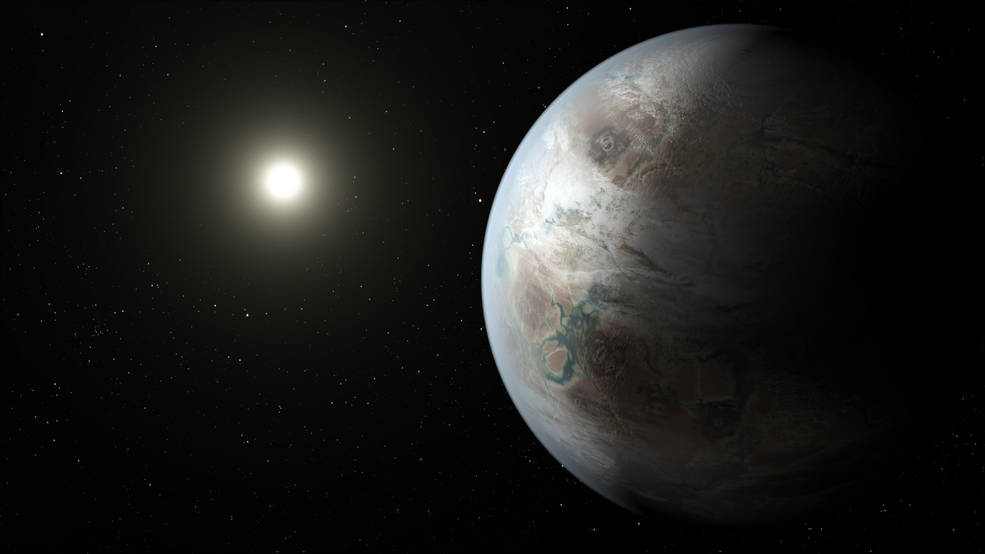NASA Announces the Most Earth-Like Planet Yet Discovered, Still No Aliens
Aliens: current hide-and-seek champions. I guess that means we're also winning?

NASA’s Kepler mission has found its most Earth-like exoplanet yet! (Quite the feat when you consider there are headlines pretty much daily about new planets being found.) Even better, that planet, Kepler 452-b, has been hanging around doing planet things (orbiting, revolving, and the like) in the habitable zone of its star for 1.5 billion years longer than Earth, which is plenty of time for life to spring up.
Of course, with Earth’s friendship-twin being 1,400 light years away, there’s no telling at this point whether the planet is actually hospitable to life, but it’s got a more decent shot than any other planet we’ve found based on the data so far:
Kepler 452-b is so exciting for several reasons: the star it orbits is very similar to our own Sun, it’s very close to Earth-size, it orbits its star only 5% further away than we do ours, and it’s only about 50% wider than the Earth. At that size, it’s likely the planet is rocky like our own home and not a gas giant. The fact that there’s a little more of the planet to love means that, even though it’s far enough along in its star system’s lifespan that water might be evaporating off its surface, it could have high enough gravity to prevent that—a necessity to life as we know it.
The data about our doppelganger was found in data the Kepler mission had collected from 2009-2013, but the renewed K2 phase of Keppler’s lifespan is unlikely to provide us with any additional data about the faraway world. Instead, we’ll have to wait for newer equipment like the James Webb Space Telescope to launch and use current techniques with additional power to get a more accurate idea of what Kepler 452-b and other promising planets are really like.
So far, it’s a safe bet that 452-b is one of the first places we’ll go looking with the next generation of space telescopes to see if we can find anyone looking back at us—or at least see whether we’re looking in the right place.
(via Gizmodo, image via NASA Ames/JPL-Caltech/T. Pyle)
—Please make note of The Mary Sue’s general comment policy.—
Do you follow The Mary Sue on Twitter, Facebook, Tumblr, Pinterest, & Google +?
Have a tip we should know? tips@themarysue.com